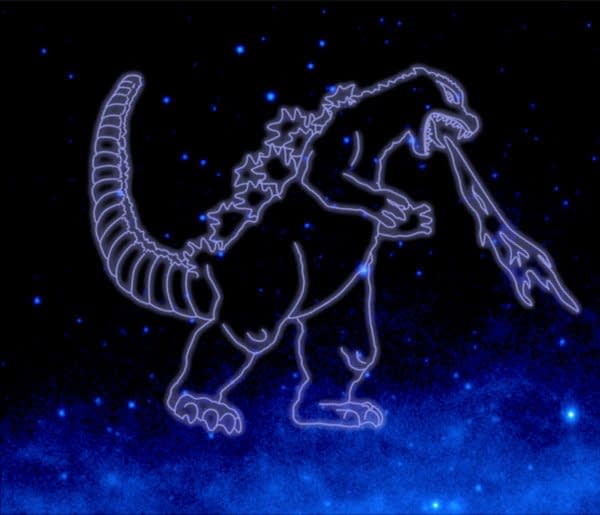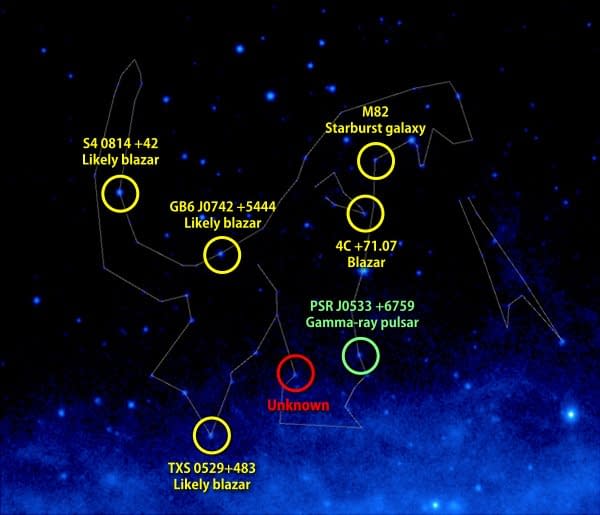Posted in: Movies | Tagged: godzilla, nasa
Yes, Really: NASA Just Gave Godzilla His Own Constellation
On a day like today, the news we all really want to hear is about NASA (National Aeronautics and Space Administration) giving freaking GODZILLA his own constellation.

According to NASA, Godzilla is made up of….you guessed it, Gamma ray pulsars and blazars:
Godzilla ranks as one of cinema's most famous monsters and is among the most recognizable symbols of Japanese popular culture. In the original 1954 movie, nuclear weapons tests disturb the creature's deep ocean habitat, and it emerges from the sea to wreak havoc in Japan.
Godzilla's trademark weapon is its "heat ray," a fiery jet. This bears at least a passing resemblance to gamma-ray jets associated with black holes and neutron stars.
When matter falls toward a black hole, vast amounts of energy are released. Gas falling toward the black hole is compressed and heated to millions of degrees and glows brightly near the black hole. Strong magnetic fields, combined with the black hole's rotation, can accelerate some of these charged particles to velocities approaching the speed of light. Particles accelerated near the black hole's event horizon, the point of no return, can escape along the black hole's spin axis, forming a jet that rushes outward at nearly the speed of light.
The fast-moving particles in these jets can interact with lower-energy light to produce gamma rays. Fermi sees evidence of gamma-ray jets in many types of so-called active galaxies, which emit far more light than normal and may flare up unpredictably. Astronomers say such galaxies possess active galactic nuclei, or AGN for short, and that the enhanced activity results from the rapid ingestion of matter by a central supermassive black hole.
Most of the gamma-ray sources visible in the Godzilla constellation are actually AGN, as are more than half the gamma-ray "stars" Fermi has cataloged to date.
Gamma-ray jets also occur in other types of astrophysical systems. When a massive star runs out of fuel and collapses under its own weight, or when two orbiting neutron stars spiral together and merge, a new black hole — and high-speed jets — may form. The result is a gamma-ray burst, the most powerful explosion in the cosmos. These monstrous blasts, which occur somewhere in the distant universe every day or so according to observations by Fermi's Gamma-ray Burst Monitor, would make even Godzilla envious.

















